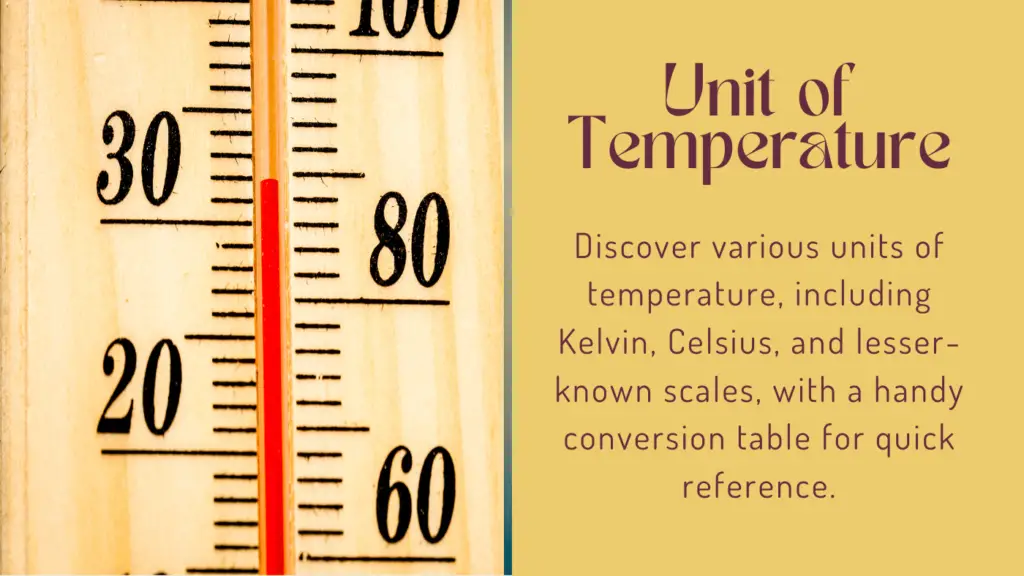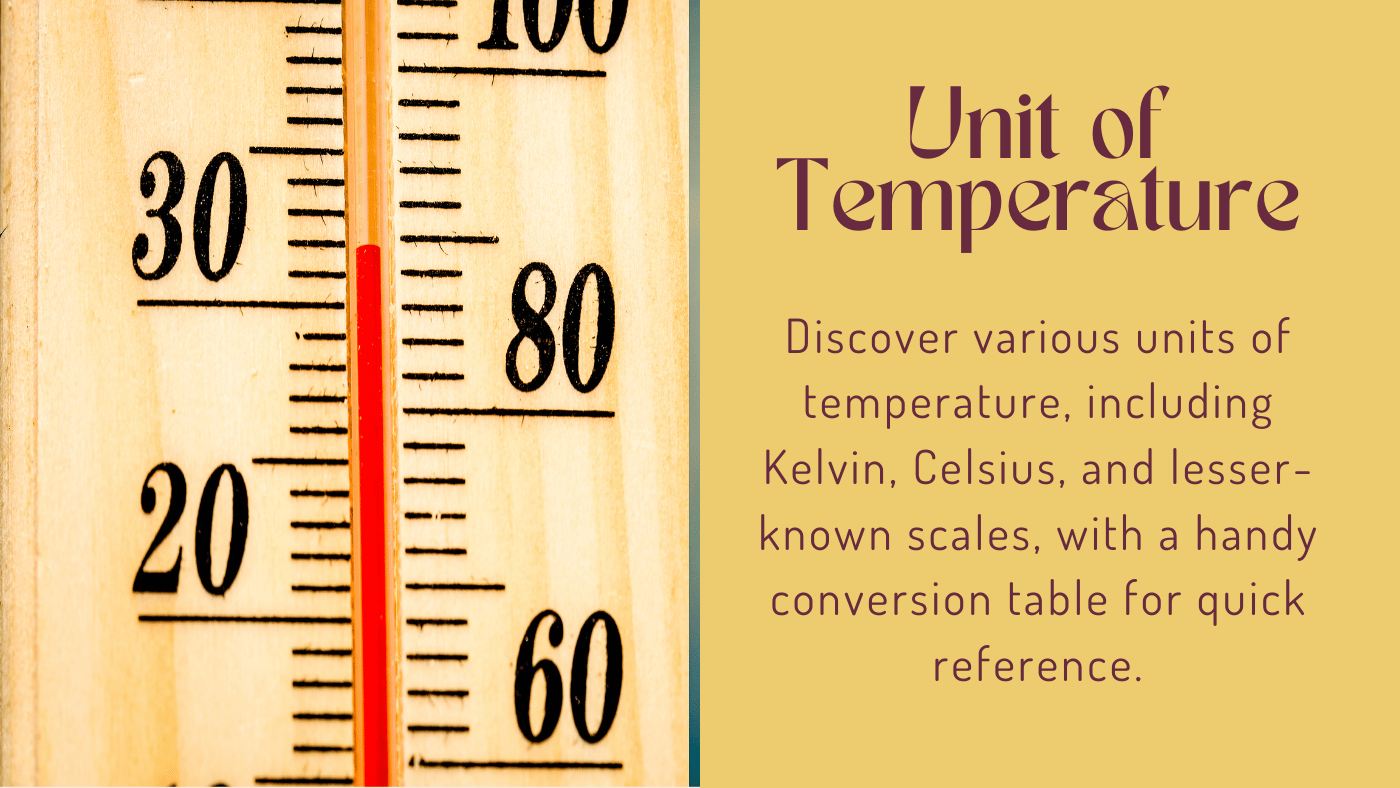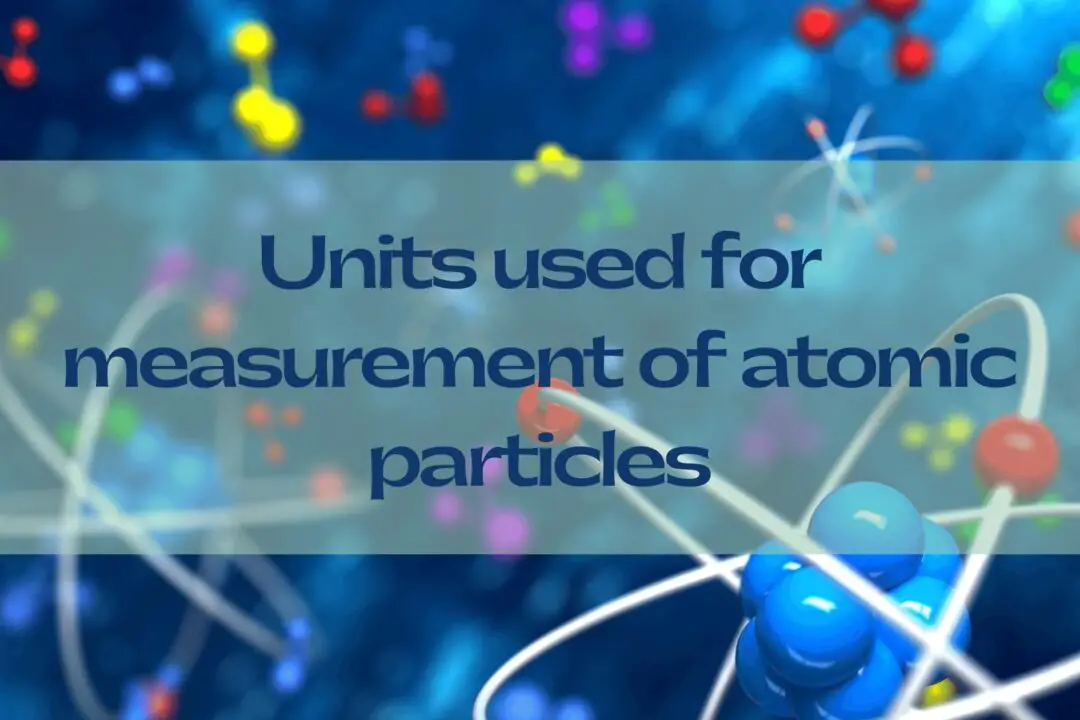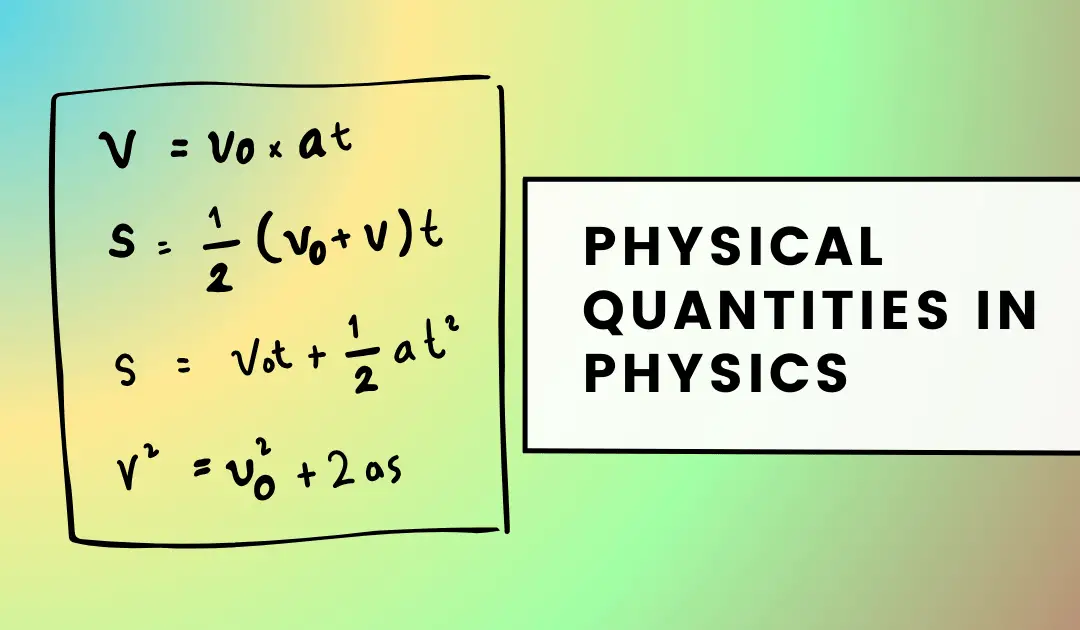In this article, we will explore the units used to measure temperature, understand the mathematical relations between them, and examine their applications.

What is temperature?
Temperature is a physical quantity that measures the average kinetic energy of the particles in a system. It serves as a parameter to gauge the hotness or coldness of an object or environment.
In essence, a high temperature implies a high degree of hotness, where particles have greater kinetic energy and move more rapidly. Conversely, a low temperature indicates coldness, where particles possess lower kinetic energy and move more sluggishly.
Various units like Kelvin, Celsius, and Fahrenheit are used to quantify temperature, each having its applications and conversion formulas.
What units are used to measure temperature?
SI Unit of Temperature: Kelvin (K)
The SI (International System of Units) unit for temperature is the Kelvin, denoted by \( K \). It is an absolute scale, meaning it starts from zero, where theoretically, all molecular motion ceases. The Kelvin scale does not use the term ‘degrees’—a temperature is simply stated as \( x \) Kelvin.
Mathematical Relation with Celsius
The Kelvin and Celsius scales are linearly related by the following equation:
\[
T(K) = T(^{\circ}C) + 273.15
\]
Where \( T(K) \) is the temperature in Kelvin and \( T(^{\circ}C) \) is the temperature in Celsius.
Celsius (°C)
The Celsius scale is commonly used for everyday applications and scientific experiments in various countries. The freezing and boiling points of water under one standard atmosphere are set at 0°C and 100°C, respectively.
Fahrenheit (°F)
In the United States and a few other countries, the Fahrenheit scale is predominantly used for everyday applications. The scale sets the freezing and boiling points of water at 32°F and 212°F, respectively.
Mathematical Relation with Celsius
The Fahrenheit and Celsius scales are related by the equation:
\[
T(^{\circ}F) = \frac{9}{5} \cdot T(^{\circ}C) + 32
\]
Rankine (°R)
This is another absolute scale used mainly in thermodynamics, especially in the United States. It has the same increments as the Fahrenheit scale.
Mathematical Relation with Fahrenheit
The relation between Fahrenheit and Rankine is:
\[
T(^{\circ}R) = T(^{\circ}F) + 459.67
\]
Conversion Formulas Between Celsius, Fahrenheit, and Kelvin
The following table presents the conversion formulas among the Celsius (\( ^{\circ}C \)), Fahrenheit (\( ^{\circ}F \)), and Kelvin (\( K \)) scales.
| From | To | Conversion Formula |
|---|---|---|
| Celsius | Fahrenheit | ( T(^{\circ}F) = \frac{9}{5} \cdot T(^{\circ}C) + 32 ) |
| Fahrenheit | Celsius | \( T(^{\circ}C) = \frac{5}{9} \cdot (T(^{\circ}F) – 32) \) |
| Celsius | Kelvin | \( T(K) = T(^{\circ}C) + 273.15 \) |
| Kelvin | Celsius | \( T(^{\circ}C) = T(K) – 273.15 \) |
| Fahrenheit | Kelvin | \( T(K) = \frac{5}{9} \cdot (T(^{\circ}F) – 32) + 273.15 \) |
| Kelvin | Fahrenheit | \( T(^{\circ}F) = \frac{9}{5} \cdot (T(K) – 273.15) + 32 \) |
Additional Temperature Units
Rankine (°R)
Rankine is an absolute temperature scale commonly used in thermodynamics in the United States. It starts from absolute zero and has the same incremental steps as the Fahrenheit scale.
Newton (°N)
The Newton scale was proposed by Isaac Newton and is rarely used today. It is based on the freezing and boiling points of water, defined to be 0°N and 33°N, respectively.
Rømer (°Rø)
Devised by Ole Rømer, this temperature scale sets the freezing and boiling points of water at 7.5°Rø and 60°Rø, respectively. It is an obsolete unit that had historical usage in Northern Europe.
Réaumur (°Ré)
Used historically in some European countries, the Réaumur scale sets the freezing and boiling points of water at 0°Ré and 80°Ré, respectively.
Delisle (°De)
Invented by Joseph-Nicolas Delisle, this scale sets the boiling point of water at 0°De and freezing at 150°De. It is a reversed scale that decreases with an increase in thermal energy.
Conversion Table: Celsius to these additional Units
| Units | From Celsius | To Celsius |
|---|---|---|
| Rankine | \( T(°R) = T(°C) \times \frac{9}{5} + 491.67 \) | \( T(°C) = (T(°R) – 491.67) \times \frac{5}{9} \) |
| Newton | \( T(°N) = T(°C) \times \frac{33}{100} \) | \( T(°C) = T(°N) \times \frac{100}{33} \) |
| Rømer | \( T(°Rø) = T(°C) \times \frac{21}{40} + 7.5 \) | \( T(°C) = (T(°Rø) – 7.5) \times \frac{40}{21} \) |
| Réaumur | \( T(°Ré) = T(°C) \times \frac{4}{5} \) | \( T(°C) = T(°Ré) \times \frac{5}{4} \) |
| Delisle | \( T(°De) = (100 – T(°C)) \times \frac{3}{2} \) | \( T(°C) = 100 – T(°De) \times \frac{2}{3} \) |
Related Questions and Answers
What is the freezing point of water in Kelvin?
The freezing point of water in Celsius is 0°C.
Using the relation
\( T(K) = T(^{\circ}C) + 273.15 \),
it translates to
\( 0 + 273.15 = 273.15 \) K.
What is the boiling point of water in Fahrenheit?
The boiling point of water in Celsius is 100°C.
Using the relation
\( T(^{\circ}F) = \frac{9}{5} \cdot T(^{\circ}C) + 32 \),
it translates to
\( \frac{9}{5} \times 100 + 32 = 212 \) °F.
Why is Kelvin an absolute scale?
Kelvin is an absolute scale because it starts from absolute zero, where theoretically, all molecular motion ceases.
Is there a negative temperature in Kelvin?
No, temperatures in Kelvin are always positive since the Kelvin scale starts from absolute zero.
How are temperature scales converted?
Mathematical relations are used to convert between different temperature scales. These equations are linear transformations that allow easy conversions.
How do you convert 0 \( ^{\circ}C \) to Fahrenheit?
Using the formula,
\( T(^{\circ}F) = \frac{9}{5} \cdot T(^{\circ}C) + 32 \),
we get
\( T(^{\circ}F) = \frac{9}{5} \times 0 + 32 = 32 \) \( ^{\circ}F \).
How do you convert 100 \( K \) to Celsius?
Using the formula,
\( T(^{\circ}C) = T(K) – 273.15 \),
we get,
\( T(^{\circ}C) = 100 – 273.15 = -173.15 \) \( ^{\circ}C \).







